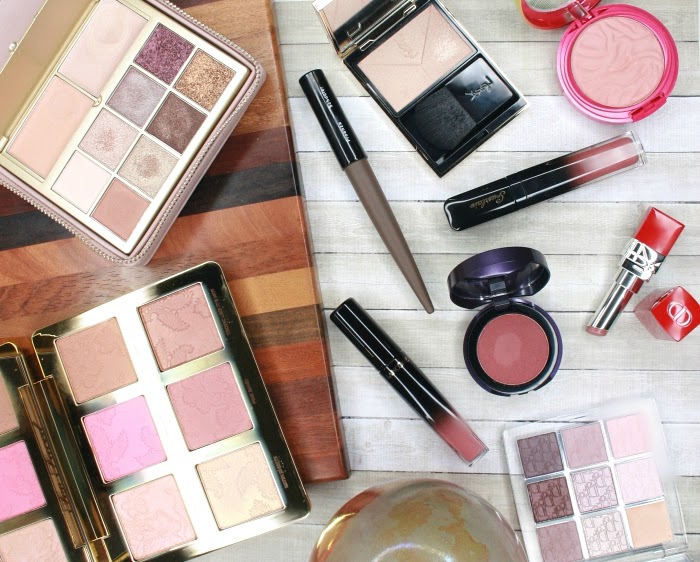Nothing says "summer" to me like a cold glass of rosé on a sunny day, sitting at the lunch table in the backyard, surrounded by friends. Rosé wine has become a big trend in the US in the past few years, and you may wonder what this light pink delightful beverage is really about. Keep reading to learn more about French rosé wine, how to choose your bottle, and how to enjoy it!
The rosé craze is fairly recent in the US: when I first moved to California 6 years ago nobody was really drinking this blush wine. In France, however, the love for rosé goes way back and I've been enjoying it every summer since my early twenties. That was a little while ago now...
Anyways, rosé used to have the reputation of being a mediocre wine of questionable quality. If you still wonder whether it can be a good wine or not, trust the French: the people of my country tend to know a bit about wine, and we are the biggest drinkers of rosé in the world with 210 million gallons sipped in 2014.
First, let me clear something up: traditional rosé wine is NOT made by mixing red and white wines. That's a lame method that is allowed in some places but it's absolutely prohibited in France, so that's never what you're going to get when buying a bottle of French rosé. No, rosé is a type of wine in itself, with its very specific production techniques. The pale pink color is obtained by leaving the grape juice (which is always white) in contact with the red grape skins for a short amount of time, only a few hours. By comparison, the grapes are left to macerate with their skin for days or even weeks for the production of red wine.
 |
| Rosé wine comes in different colors: Tavel vs. Listel |
Rosé comes in a whole palette of colors, from a very pale blush, almost clear with a hint of pink, to a rich cherry pink color. Different regions allow the use of different grape varietals, and colors also vary in the same region between producers. Color is not linked to quality, but a deeper pink usually means a more robust wine while a very pale blush generally indicates a lighter wine.
Almost all winemaking regions of France produce some rosé, but some are more famous and sought after. It's the case of the Southern regions of Provence, Languedoc, and to a lesser extent the South of the Rhône Valley. Each region has several appellations, protected names that can only be given to wines grown in a specific area (sometimes as small as one side of a hill) and produced following strict regulations regarding the grape varietals, alcohol content, methods used, etc.
Unlike red and white wines, rosé is more of a seasonal drink. Sure, you can drink it all year long, but having a glass on a cold winter day when it's raining outside just doesn't feel quite right. Rosé is light, fruity, refreshing, so it's an easy drink that is best enjoyed in the summer. It must be served chilled: keep it in the fridge until you open it, and in an ice bucket on the table. In fact, you can even... put ice cubes in your glass of rosé. If people around look at you like you're crazy, tell them it's called rosé piscine and it's quite popular in France. So is rosé pamplemousse, a cocktail made with Rosé wine and pink grapefruit syrup.
 |
| Serve chilled! |
Rosé all day sounds like a plan, but to be honest it's the recipe for a massive headache. Because it's so refreshing and tastes so light you tend to drink it a bit fast, especially when it's hot. It's best to drink it with food: not only does it help pace yourself, but some dishes pair particularly well with the fruity and bright flavor of rosé. Grilled meat and fish, fresh vegetables, salads, olives, cured meats and more generally Mediterranean inspired cuisine play very well with a glass of cold rosé. Rosé is also hugely popular in France for l'apéro: a pre-meal tradition, drinks are served together with snacks and finger foods such as peanuts, cherry tomatoes, cheese, slices of salami, etc...
 |
| Are you coming for l'apéro? |
A few things to keep in mind when shopping for rosé:
- price is not a direct indication of how much you will enjoy the wine. You can always find great French wines for a very affordable price, but that's particularly true for rosé. After all, rosé is a light summer wine that doesn't take itself too seriously! As long as you buy a bottle of French rosé with an appellation such as Côtes de Provence, Tavel, etc, you have the guarantee that the wine was produced following a set of strict rules. Beyond that, it's all a question of personal taste and budget. In France, I, and most people I know, wouldn't spend more than 6-8 euros for a bottle of rosé. I see a lot of $20+ designer bottles here in the US, and to be honest I don't think they're worth the extra money. If your budget allows, sure, try them! But an $8 bottle would most likely be just as fun to drink.
- rosé wine doesn't keep well and should be enjoyed within a year. Don't keep it in your wine cellar as it won't age well, with the exception of a few appellations like Tavel.
- some rosé wines are fruity and rather sweet, others can be quite dry. On that aspect it's very much like white wine. So try a few to figure out which ones you prefer.
I personally buy most of my rosé wines at Trader Joe's: they have a good selection with a nice variety and affordable prices. Here are 4 bottles that I bought recently and can recommend:
- J Quinson Côtes de Provence is one of my favorites, and it sells at Trader Joe's for $7.99. It's dry, light and crisp, and it pairs really well with grilled food.
- Réserve des Chastelles Tavel. Tavel is a darker rosé from the Rhône Valley that is more full-bodied and bold than the classic pale wines, and pairs well with meats. This one is also from Trader Joe's, $8.99
- Listel Sable de Camargue: grown in the West half of the Mediterranean coast on sandy soil. I got this one at Bevmo for $12.99.
- Gérard Bertrand Côte des Roses: a balanced wine from the Languedoc region, not too sweet or too dry. Also bought at Bevmo for $12.99, but I saw it at Costco last year. The bottom of the bottle is carved to look like a rose.
I've also tried a handful of American rosés, but they're about the same price as the ones I listed above and often too sweet or too high in alcohol for my taste. A couple that I thought were fine include the ones by Dark Horse and Apothic.
Do you enjoy rosé wine? Have you found a favorite?















No comments
Unfortunately the comment system does not work on mobile phones at this time :( If you see this message and leave a comment, I will be unable to approve it, I'm really sorry about this issue!